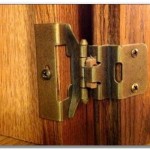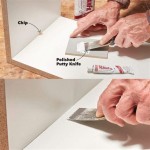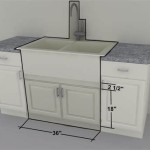How to Install Laminate Floor in Kitchen Cabinets
Installing laminate flooring in kitchen cabinets can enhance their aesthetic appeal and durability. By understanding the essential aspects of this process, you can ensure a successful installation that meets your functional and design requirements. This article explores the key considerations for laminate flooring installation in kitchen cabinets, providing guidance for seamless execution.
Measurements and Planning
Before commencing the installation, it's crucial to accurately measure the cabinet spaces. This includes determining the length and width of each cabinet, as well as any irregular shapes or cutouts. Careful planning and measuring will ensure a precise fit and minimize the need for modifications during installation.
Laminate Selection
Choosing the right laminate flooring for your kitchen cabinets is essential. Consider the durability, water resistance, and color options to complement your kitchen's style. Opt for high-quality laminate flooring designed for use in moisture-prone areas, as kitchen cabinets can be exposed to spills and humidity.
Tools and Materials
Gather the necessary tools and materials before starting the installation. These include a tape measure, utility knife, jigsaw or circular saw, hammer, and nail set. Additionally, you'll need laminate flooring, underlayment, and appropriate adhesives. Ensure you have the right tools for the job to achieve precise cuts and a secure installation.
Underlayment Installation
Laying an underlayment prior to installing laminate flooring is crucial for providing a smooth surface, reducing noise, and preventing moisture buildup. Cut the underlayment to fit the cabinet spaces, ensuring it's snugly in place. Overlapping the underlayment at joints will provide additional support and moisture protection.
Laminate Floor Installation
Begin installing the laminate flooring by placing the first plank along the back edge of the cabinet. Use a hammer and nail set to secure the plank, ensuring it's level and flush with the cabinet walls. Continue installing additional planks, staggering the joints for stability and to prevent gaps. Secure each plank securely to ensure a durable and well-fitted floor.
Edging and Trimming
Once the laminate flooring is installed, apply edge molding or trim to conceal the exposed edges. Cut the trim to fit around the cabinet openings and secure it with appropriate adhesives. This step provides a finished and professional appearance, enhancing the overall aesthetics of your kitchen cabinets.
Conclusion
Installing laminate flooring in kitchen cabinets requires careful planning, accurate measurements, and proper execution. By following the essential aspects discussed in this article, you can achieve a durable, visually appealing, and functional upgrade to your kitchen space. Remember to take the necessary precautions and use the appropriate tools and materials to ensure a successful installation experience.

Working Around Kitchen Appliances Installing Laminate Flooring Vlog 194

Is There A Special Way To Install Laminate Flooring In The Kitchen

Laminate Flooring In Kitchens Do It Yourself Installation

Do You Install Floating Floor Under Cabinets Wood Flooring

How To Install Laminate Flooring Around Doors And Cabinets

What Is A Floating Floor Diamond Kitchen And Bath

Do You Install Floating Floor Under Cabinets Wood Flooring

Can You Replace Kitchen Flooring Without Removing Cabinets

Do You Install Flooring Before Cabinets Best Practices Reallyfloors America S Est Hardwood

How To Install A Laminate Floor
Related Posts








